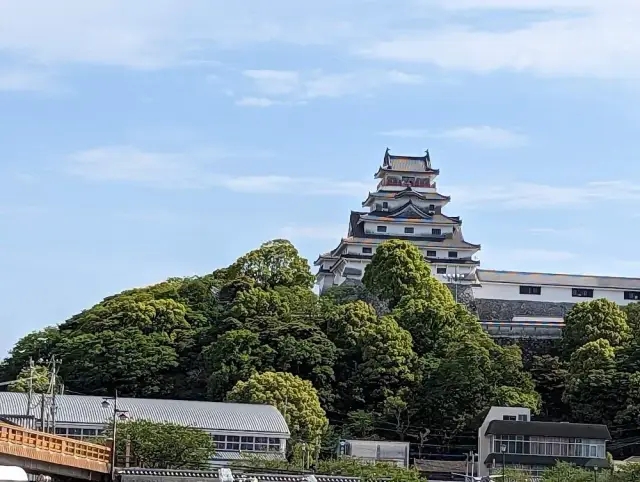https://www.dekitabi.com/itinerary/fukuoka-day-trip-karatsu
Nestled in the heart of Saga Prefecture, Karatsu offers a unique glimpse into Japan’s rich history and culture. From historic buildings to ancient shrines and majestic castles, Karatsu is a treasure trove for those seeking to explore Japan’s past. This guide delves into four must-visit sites: the Former Karatsu Bank Tatsuno Kingo Memorial Hall, Karatsu Shrine, the Old Takatori Residence, and Karatsu Castle. Each of these landmarks provides a distinct perspective on the region’s historical significance.
Former Karatsu Bank Tatsuno Kingo Memorial Hall

https://www.dekitabi.com/attraction/former-karatsu-bank
The Former Karatsu Bank Tatsuno Kingo Memorial Hall stands as a testament to Japan’s architectural and financial history. Built in 1913, this building is named after Tatsuno Kingo, a renowned architect and financial reformer. Tatsuno Kingo played a pivotal role in modernizing Japan’s banking infrastructure during the Meiji era.
The building itself is a marvel of early 20th-century architecture, showcasing Western-style design elements blended with traditional Japanese aesthetics. The former bank’s intricate facade and opulent interiors offer visitors a glimpse into the opulence of early 20th-century Japanese finance. Inside, the well-preserved rooms display period furnishings, historical documents, and artifacts related to Tatsuno Kingo’s contributions to the banking industry.
Visitors to the Former Karatsu Bank Tatsuno Kingo Memorial Hall can explore the exhibits that detail the evolution of banking in Japan and Tatsuno Kingo’s role in shaping it. The museum’s curated displays and informative plaques provide valuable insights into the financial and architectural advancements of the Meiji period.
Karatsu Shrine

https://www.dekitabi.com/attraction/karatsu-shrine
Situated in the heart of Karatsu, Karatsu Shrine is a significant Shinto shrine with a history that spans over a millennium. Founded in 1592, the shrine is dedicated to Futsunushi-no-Mikoto, the deity of military success and protection. Karatsu Shrine holds a special place in the hearts of locals and visitors alike, serving as a spiritual and cultural center.
The shrine’s architectural design features traditional Shinto elements, including a grand torii gate, a beautifully adorned honden (main hall), and a serene path leading to the shrine grounds. The grounds are adorned with lush greenery and seasonal flowers, making it an ideal spot for a peaceful stroll or a reflective pause. The annual Karatsu Kunchi festival, held in early November, is a highlight of the shrine’s calendar, attracting thousands of visitors with its vibrant processions and traditional performances.
Visitors to Karatsu Shrine can partake in traditional Shinto practices, such as offering prayers and purchasing omamori (amulets) for good fortune. The shrine’s tranquil ambiance and historical significance make it a must-visit for those interested in exploring Japan’s spiritual heritage.
Old Takatori Residence

https://www.dekitabi.com/attraction/former-takatori-house-karatsu
The Old Takatori Residence, known locally as Takatori-ke, is a prime example of traditional Japanese residential architecture. Built during the late Edo period, the residence offers a glimpse into the lifestyle and design preferences of Japan’s elite during the 19th century.
This historical home features classic Japanese architectural elements, including tatami mat flooring, sliding shoji doors, and a beautifully landscaped garden. The residence was once the home of the Takatori family, a prominent local clan with significant influence in the region. The interior of the house is meticulously preserved, with traditional furnishings, antique artifacts, and decorative elements that reflect the cultural and artistic tastes of the era.
Visitors to the Old Takatori Residence can explore the elegantly furnished rooms, learn about the Takatori family’s history, and appreciate the craftsmanship of traditional Japanese construction. The serene garden, with its carefully arranged plants and peaceful pond, provides a tranquil retreat and a perfect setting for reflection on Japan’s architectural heritage.
Karatsu Castle

https://www.dekitabi.com/attraction/karatsu-castle
Dominating the skyline of Karatsu, Karatsu Castle is an iconic symbol of the city’s rich history. Originally constructed in 1602 by Lord Terazawa Hirotaka, the castle has played a significant role in Japan’s feudal history. Although the original structure was dismantled during the Meiji Restoration, a reconstruction completed in 1966 now stands as a testament to the castle’s historical importance.
Karatsu Castle’s architecture reflects traditional Japanese castle design, featuring a multi-tiered keep with distinctive curved roofs and ornate detailing. The castle’s elevated position offers panoramic views of the surrounding landscape, including the picturesque Karatsu Bay. The castle grounds are home to several historic structures, including the castle tower and the inner moat, which provide a glimpse into the defensive capabilities of feudal Japanese fortifications.
Inside Karatsu Castle, visitors can explore exhibits that detail the castle’s history, including its role in local and national events. Artifacts, historical documents, and interactive displays offer insights into the lives of the samurai who once defended the castle. The castle’s scenic location and historical significance make it a popular destination for history enthusiasts and casual visitors alike.
Discovering Karatsu
Karatsu’s rich historical tapestry is woven through its landmarks, each offering a unique window into Japan’s past. Whether you’re exploring the opulent Former Karatsu Bank Tatsuno Kingo Memorial Hall, seeking spiritual solace at Karatsu Shrine, delving into traditional Japanese residential life at the Old Takatori Residence, or marveling at the architectural splendor of Karatsu Castle, each site provides a distinct and enriching experience.
For those planning a visit, Karatsu’s historical attractions are easily accessible and offer a range of experiences that cater to different interests. From architectural marvels and spiritual sites to traditional residences and historic castles, Karatsu promises an immersive journey into Japan’s cultural heritage.


Leave a Reply